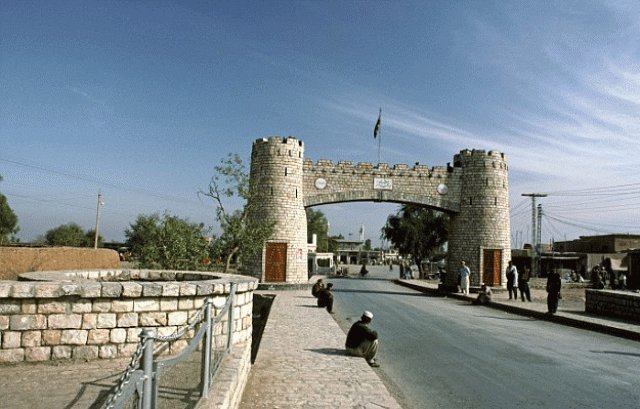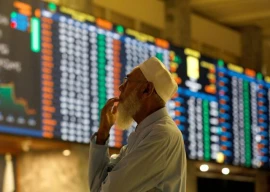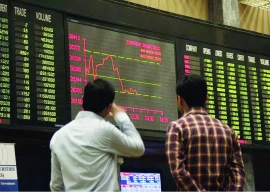
K-P’s average growth rate of 5.1% was better than the national average of 4.5% for the period of 2013-14 to 2016-17, according to the publication.
Rlng-Based: K-P to get 660MW power plant
Punjab, the powerhouse of the ruling PML-N, is in second place, behind the war-torn K-P province since 2008. Pakistan Tehreek-e-Insaf (PTI) has been the ruling party in K-P since 2013.
Sindh, which was the fastest growing provincial economy from 2000 to 2007, lost its momentum in 2008 when the PPP came into power, writes Dr Pasha.
Balochistan has struggled with a growth rate that has not exceeded 3% at any time during the last 15 years. The writer says that this is one of the worrisome features of the growth process since 1999-2000.
“The people of Balochistan are probably suffering today from a greater sense of deprivation and exclusion.”
The author, who is former finance minister of Pakistan and husband of Punjab’s incumbent Finance Minister Dr Ayesha Ghaus Pasha, has for the first time segmented Pakistan’s economic growth into provincial performance.
In his book, Pasha explains the interconnectedness of inequality and low growth in Pakistan. The book states that the economic and social structures have perpetuated high income, wealth and regional disparities.
The publication shows that Punjab had a share of 54% in national GDP in 2016-17. The next economy in terms of size is Sindh, with a share of 30%. K-P and Balochistan have shares of 13% and 3%, respectively.
However, findings suggest that the highest growth rate in K-P was more because of the structure of its economy than the economic policies of the provincial government. Although Punjab has remained behind K-P, the pace of growth that was 2.9% in 2008 in Punjab jumped to 4.6% in 2016-17.
Compared to this, K-P’s economy that grew at a pace of 4.9% in 2008 posted 5.1% economic growth rate in the last fiscal year 2016-17.
Khyber-Pakhtunkhwa
Dr Pasha’s findings come as a surprise, as it is usually believed that K-P has suffered due to worsening law and order situation since 2001 when Pakistan decided to become an ally in the US-led war against terrorism. The basic contributing factor to growth, however, is the large inflow of remittances per-capita, both foreign and domestic, according to the author. Almost 20% of household income in K-P comes from remittances, as compared to less than 10% in Punjab and below 3% in Sindh and Balochistan.
According to the author, K-P has acquired the characteristics of a remittance-led service economy, with a limited indigenous production base.
Afghan transit trade and NATO supply movement have contributed to the higher growth in the transport sector. The ownership of dwellings sub-sector has achieved a high growth rate of 6.5% due to the investment in housing from home remittances. These inflows have also created high demand for economic and social services.
K-P has maintained a growth rate close to 5% throughout the 15 years and achieved the highest growth rate since 2007-08.
Punjab
Pakistan’s most populated province grew at an average rate of 4.6% since 2013 - lower than K-P but higher than the other two provinces.
This rate was 2.9% for the period of 2008 to 2012-13. According to the author, the performance of the agricultural sector has a vital role to play in the growth process of Punjab. He states that unfortunately, the emerging structural problem for Punjab is the loss of dynamism of agriculture. This sector grew at the rate of almost 4.5% in the decade of the 90s, but since then it has managed a growth rate of only about 2%.
Sindh
During 2013-14 to 2016-17, Sindh’s economy grew at a pace of 4.2%, which is even lower than the national average but only better than Balochistan. The book states that the economy of Sindh had shown exceptional dynamism in the Musharraf period.
Conditions in Sindh changed fundamentally after 2008. The breakdown of law and order in the metropolitan city of Karachi has led to a severe loss of economic momentum, from over 6% growth in the earlier years to below 2% after 2008. This implies a loss to the regional economy of almost Rs400 billion per annum, according to the author.
Industry has actually contracted since 2008. Agriculture in Sindh has also performed poorly over the last 15 years, with an average growth rate of less than 2%. The services sector, especially trade, has also been impacted by periodic closures and lack of security.
Balochistan
Balochistan has remained the slowest growing province since 2000. It registered an average growth rate of 3.6% for 2013-14 and 2016-17 periods.
K-P completes 445 water schemes in southern districts
The insurgency in the province and actions taken in response by the military has reduced investment and economic activity, and in some years the real per-capita income may have actually fallen, according to the author. However, the province has had spectacular success in the production of fruits and vegetables, which has made it the fastest growing province in agriculture. In some products, Balochistan contributes a large share to national output.
The favourable 7th NFC Award to Balochistan is beginning to have some positive impact on the economic growth rate.
Published in The Express Tribune, February 13th, 2018.
Like Business on Facebook, follow @TribuneBiz on Twitter to stay informed and join in the conversation.


















COMMENTS
Comments are moderated and generally will be posted if they are on-topic and not abusive.
For more information, please see our Comments FAQ